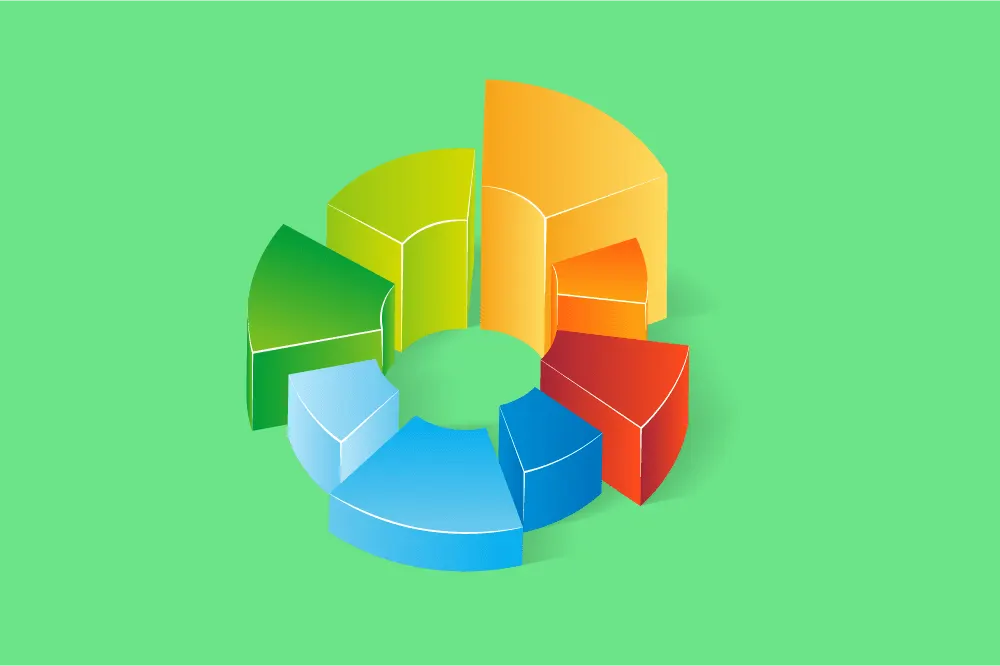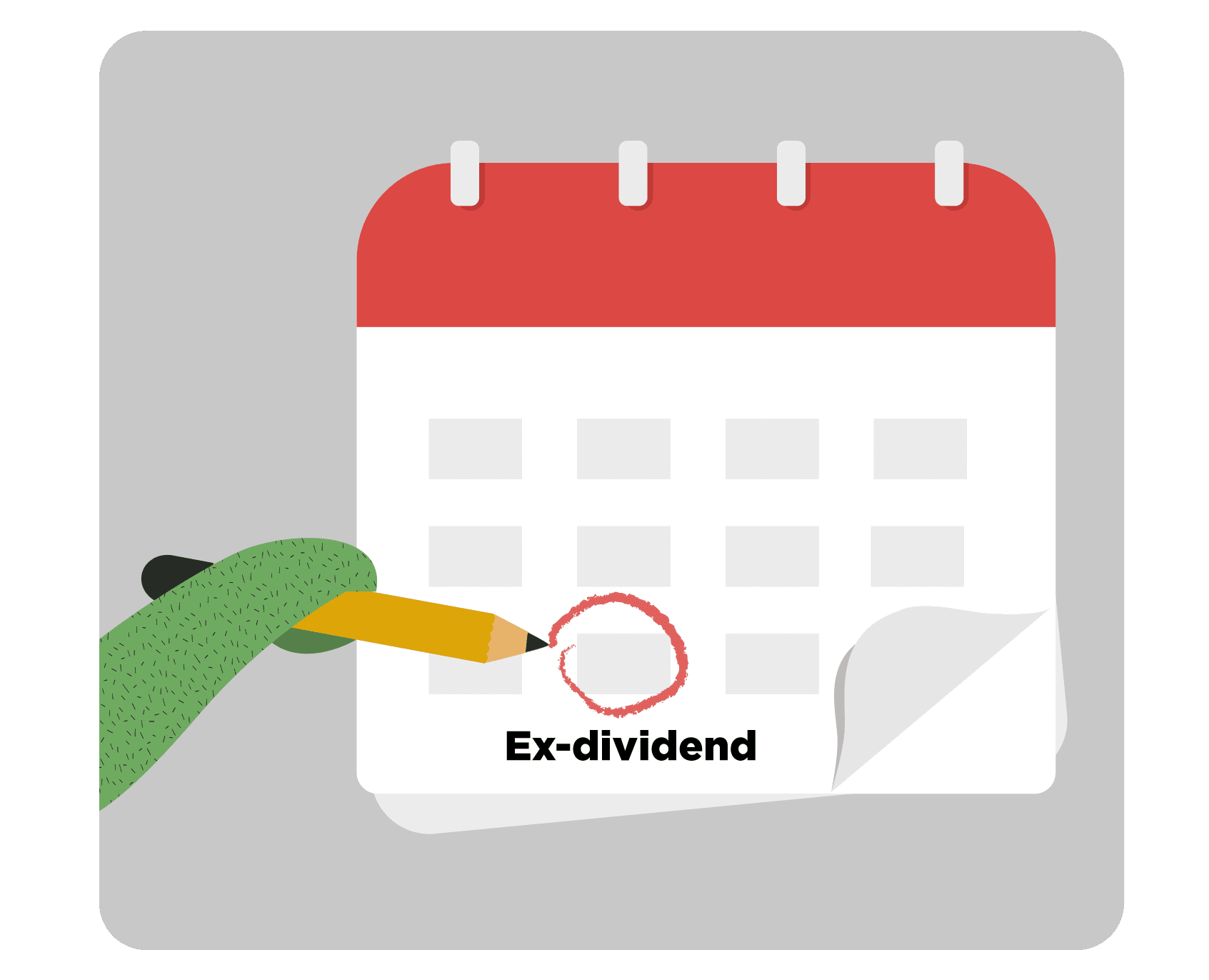Our partner, XM, lets you access a free demo account to apply your knowledge.
No hidden costs, no tricks.

Investing in stocks and earning dividends can make a significant income. However, when you are hunting for stocks that pay out dividends, you do not want to miss the ex-dividend day if you wish to qualify for the next dividend payment.
The ex-dividend date refers to a stock trading day without receiving the upcoming dividend payment. Corporations on this day look at who is eligible to receive dividends and inform them when they will get paid. Most shareholders keep a close eye on the ex-dividend date, and traders attempt to purchase shares before the ex-dividend date to receive the next dividends.
If you are looking for a specific stock's ex-dividend date, checking a company's financial reports will give you the answer, but it might get overwhelming. Therefore, we prepared the following guide on how you can find the ex-dividend date, and what you need to know before buying shares.
“I do not own a single security anywhere that doesn’t pay a dividend, and I formed a mutual-fund company with that very simple philosophy.” - Kevin O’Leary

Dividends are distributions of money that a company pays to its shareholders. They are usually paid quarterly and are expressed as a percentage of the stock price.
Some traders look for companies that pay dividends on their shares and then accumulate dividend payments from the stocks they invest in. The dividend payment goes through some stages, including the official statement and listing of the payable dividends.
The ex-dividend date is the day on which you trade stocks without qualifying for a dividend payment. It means that if you buy shares on the ex-date of a company you will not receive dividends for the upcoming dividend period even if you keep holding the shares.
During the ex-dividend date, the company figures out which shareholders are eligible for dividends. This stage comes before the recording stage where the official statement about recipients is made.
Note that the stock price drops a little on the dividend payment day - it drops by the amount of the overall dividends paid. Therefore, if you buy stocks before the ex-dividend date, it does not mean that you are making a huge profit.
Similarly, missing the ex-dividend date does not mean that you are losing a huge gaining opportunity, because the stock price is more likely to drop due to the dividend distributions.
Shareholders who are eligible for receiving dividends are those who buy shares at least one business day before the ex-date. They are listed in the company records and receive internal communication from the company.

Shareholders get notifications from the company mostly through email, which includes the dividend information such as the ex-dividend date, the record day, the dividend payment amount, and the payment date.
Therefore, it is easier for traders who own shares for quite a long time to find the ex-dividend date, as they receive all the information from the company.
Traders who look to buy shares in a company that pays dividends do not receive any information from the company. Since traders are not listed in the company records, they need to look for the information elsewhere.
Investors can find an ex-dividend date on investment and trading websites. There are listings for companies that pay dividends, including the declaration date, the ex-date, and every other stage regarding the company dividend specifications.
Finding the ex-date is important for your dividend stock portfolio. Therefore, you need to learn the process by which dividends are paid, starting from the company declaring dividend payments, to the stage where they actually pay them out.
There are four stages, and each stage comes on a different date which traders need to keep in mind. They are:
This is the first day when the company management or board of directors announces that they will pay dividends. They then declare the dates for the upcoming stages in the payment process, including the payment day.
These announcements are made regularly depending on how often the dividends are paid. It can be either quarterly, semiannually, or annually. Companies will also disclose the dividend payment amount as well as the earnings report of the company.

This information is circulated among shareholders through mail or emails. This declaration also becomes available through financial sources and websites, which list companies’ stocks and dividend information.
This is the day that determines who is eligible to receive dividends. Traders need to buy shares at least one business day before the ex-date in order to be listed in the company records.
If a trader buys shares before the ex-dividend date, even just one business day before, they are going to get paid dividends on the payment date that is determined by the company.
During this day, the stock price drops slightly in exchange for the total sum of dividends paid to all shareholders.
On this day, the company produces official statements including information on previous dates. These are official documents that include which traders purchased shares and will receive dividends, and everything is recorded in the company books.
The fourth and final day of the dividend payment process is the day when the dividend is paid. On this day, dividends become payable from the company books, and they become receivable on the shareholders' side.
“A lot of people love Oreos. So their manufacturer is making money. That means more dividends for shareholders.” - Maria Bartiromo
Our partner, XM, lets you access a free demo account to apply your knowledge.
No hidden costs, no tricks.
If you sell your shares on the ex-dividend date or after, you will still qualify to receive the recurring dividends. The next buyer will not qualify for this dividend period, since the transaction did not happen at least one day before the ex-date. However, if you sell your shares you will not qualify for the next round of dividend payments.
If you are looking to receive dividends from the current quarter, you need to buy shares at least one business day before the ex-date. This way you will qualify for the current dividend payment period.
However, if you wait till after the ex-date you might be able to buy the shares at a discounted price. When the dividends are paid, the stock price is more likely to drop slightly since dividends are paid from the company’s equity.
The company’s board of directors sets and announces the dates regarding dividend payments. They announce the ex-date alongside the other dates (declaration date - record date - payment date). The ex-dividend date mostly comes one business day before the record date.
Yes, since the dividends are paid from the company’s equity, the stock price drops slightly by the total amount of dividends paid to shareholders. Therefore, some traders may wait for the ex-date to buy the shares at a lower price.
The ex-date is the day when the shares are traded without qualifying for the current dividends period. The ex-dividend date is usually set one business day before the record date.
The record date is when the company officially records all its shareholders, and how much is paid to shareholders as dividends.